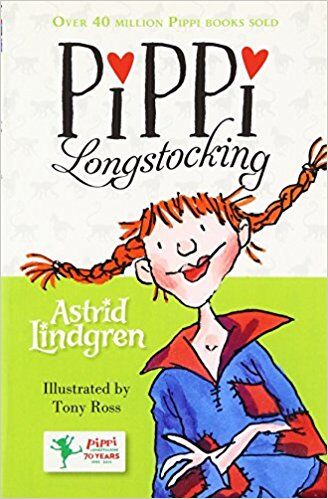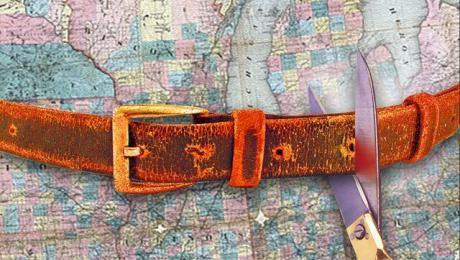The Syrian Refugee Crisis Inspired Afghan-American Writer Khaled Hosseini’s Novel, “Sea Prayer”
Khaled Hosseini’s fourth and newest book is inspired by Alan Kurdi, the young child whose lifeless body was found on a Turkish beach. “Sea Prayer” is a short, illustrated book for readers of all ages and follows a virtual reality show of the same title that was scripted by Hosseini.
Acclaimed Novelist and UNHCR Goodwill Ambassador
Khaled Hosseini, a United Nations High Commissioner for Refugees (UNHCR) Goodwill Ambassador since 2006, will donate his earnings from this book to the UNHCR and his own charitable foundation, the Khaled Hosseini Foundation. “Sea Prayer” takes the form of a letter from a father to his sleeping son. Its press release quotes Hosseini’s statement that his book “is an attempt to pay tribute to the millions of families” that “have been splintered and forced from home by war and persecution.”
Hosseini himself is one of many who have fled their homes “in the midst of a displacement crisis of enormous proportions,” a crisis that is the source of inspiration for his latest creation.
From an Afghan Setting to Other Venues
When his debut novel, “The Kite Runner,” was published in 2003, Khaled Hosseini burst onto the literary scene as a distinctive voice bringing foreign characters to distant audiences. Hosseini writes powerful stories, and his new novel is at least as memorable as the others.
Hosseini followed “The Kite Runner” with “A Thousand Splendid Suns” and “And the Mountains Echoed.” Each of his first three novels had an Afghan character or storyline. This time the father of two writes from the perspective of a father and what Hosseini imagines he would feel in such circumstances.
Although he is a refugee, Hosseini was studying in Paris where his diplomat father was based when the Soviet invasion caused his father to seek asylum abroad. Consequently he had a more luxurious route than the harrowing journey Syrian refugees and other refugee victims of war experienced.
Nonetheless, just three years after the publication of “The Kite Runner,” its author became a Goodwill Ambassador for UNHCR, the UN’s refugee agency, revealing his commitment to the cause of refugees.
The “Sea Prayer” is a good book to read to your own children or to use to teach school children about the subject of refugees. For prospective children’s literature writers, it offers a fine example of addressing the subject for audiences of all ages. It is fortunate that a writer of this caliber is taking this message to a wide audience.
- Published in Writing & Editing Resources
Unconventional Astrid Lindgren Conceived Unconventional Pippi Longstocking
If you have never heard of Astrid Lindgren, you should correct that gap, especially if you aspire to be a children’s book author. To get started you may want to see “Becoming Astrid,” the recently made movie about the beloved children’s book author. If you visit Stockholm, include a trip to Junibacken, the children’s museum, which has a storybook train that takes visitors through some of her stories.
Lindgren’s Widespread Popularity
Astrid Lindgren’s books have been embraced by readers in more than 100 countries and have sold more than 144 million copies. Her books have been translated into 85 languages. She is best known for her Pippi Longstocking and Karlsson-on-the-Roof book series.
Pippi Longstocking, the Brothers Lionheart, Emil of Lönneberga, and Ronia the Robber’s Daughter are among Lindgren’s characters whose first rapt audience were her children and their friends. Her daughter imaginatively created “Pippi Longstocking” as a name and then asked her mother to tell her a story about this character.
The first book about Pippi was published in 1945. Pippi was a groundbreaking character because she was strong, smart, and more intelligent than adults.
An Unconventional Outlook Created Enduring Classics
As a 17-year-old in 1920, Lindgren applied for a trainee journalist position, an unusual career for a female at the time, confirming her reputation in her small town for being unconventional. She did not become an author until she was in her forties.
In the letter accompanying her original manuscript to the publisher, Astrid Lindgren described her first character, Pippi Longstocking, as “a small übermensch in the form of a child, living in a perfectly normal environment.” A Der Spiegel article about the author,
“Wartime Diaries Reveal the True Astrid Lindgren,” revealed this description.
Her personality, education, reading, children, and World War II all influenced Astrid Lindgren’s books for children. She was a prodigious reader. The Der Spiegel article mentions that Lindgren had said that “Hunger,” a novel by Knut Hamsun, was a source of her inspiration. Bertrand Russell, A.S. Neill, and Alfred Adler appear to have influenced her as well.
In her letter to the publisher she pointedly wrote:
“Bertrand Russell wrote that childhood is dominated by the desire to become an adult, or rather the will to power. According to Russell, a normal child dwells on fantasies that relate to the will to power. I don’t know if Bertrand Russell is right. Judging by the practically pathological popularity Pippi Longstocking has enjoyed over the course of two years among my own children and their friends of the same age, I am inclined to believe him.”
Before she started writing stories, she read many to her young children. Astrid Lindgren’s life and books reveal that becoming a children’s literature author can be inspired by many influences.
- Published in Writing & Editing Resources
Why Rust Belt Writers Should Consider Writing for Belt Magazine and Belt Publishing
The term “rust belt” evokes an image of decay, but Belt Magazine and Belt Publishing want to show that there is much more to the region than the negative, oversimplified term used for the areas that have lost their former manufacturing strength or presence. The so-called Rust Belt includes successful areas like the Minneapolis-St. Paul region, as well as struggling cities in Ohio and in the Northeast.
Belt Magazine is an affiliate of Belt Publishing, which was founded in 2013 to provide a publication venue for writing about the Rust Belt and the Midwest for a regional and national audience. Both publications value quality and complex writing.
Belt Magazine aims to resuscitate long-form magazine journalism with essays and commentary articles by writers, poets, journalists and other professionals. Belt Publishing’s anthologies allow writers the opportunity to write about specific places that offer readers an opportunity to find stories, poetry, and perspectives that resonate with them.
As Belt Publishing states on its website about itself and its sister publication: “We believe in quality over quantity and community over analytics.” So far, most of the published material is about the Midwest.
About Belt Magazine and Belt Publishing
Anne Trubek, formerly Associate Professor of English at Oberlin College, is the founder of Belt Publishing and the weekly Belt Magazine, an online publication. Martha Bayne, the senior editor of Belt Publishing, is a Chicago-based freelance writer.
For more information about the book publisher and magazine read Chicago Tribune reporter Christopher Borrelli’s article, “’Rust Belt,” and City Lab’s article by Alastair Boone, “Stories from the Rust Belt, for the Rust Belt.”
No Shortage of Midwestern Talent
The Midwest boasts a wealth of talent, with some of the best Master of Fine Arts programs in the country at the University of Iowa, University of Michigan, and the University of Wisconsin These two publications welcome regional voices and provide the students and graduate of these programs with an opportunity to share their talent and specific Midwest experience with their readers.
Writers from the Rust Belt
Many of our well-known classic and current writers have Midwestern roots, and their prose used the Midwestern landscape as the background of their writings. Midwestern writers are as diverse as Sherwood Anderson, Charles Baxter, Saul Bellow, Willa Cather, Theodore Dreiser, Jack Driscoll, Stuart Dybek, Jaimy Gordon, Lisa Lenzo, Lorrie Moore, Joyce Carol Oates, Marilynne Robinson, George Saunders, and Richard Wright.
Writers from the Midwest should take advantage of Belt Magazine and Belt Publishing to showcase their craft and reveal their presence to a regional and national audience. Writers published by either or both outlets will reach beyond the niche of literary magazines, because these two publication sources have a more diverse audience than literary magazines.
- Published in Writing & Editing Resources



